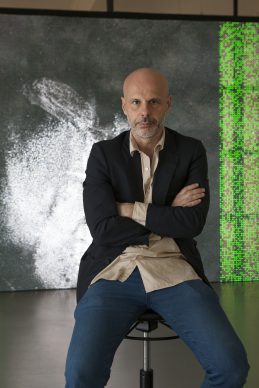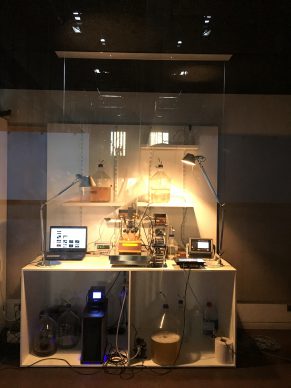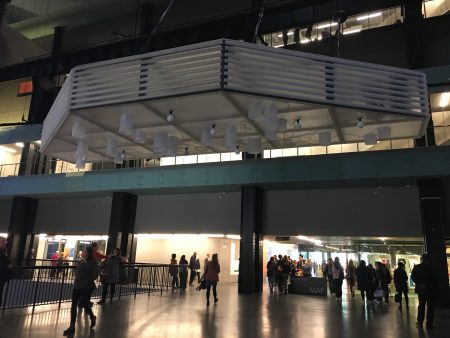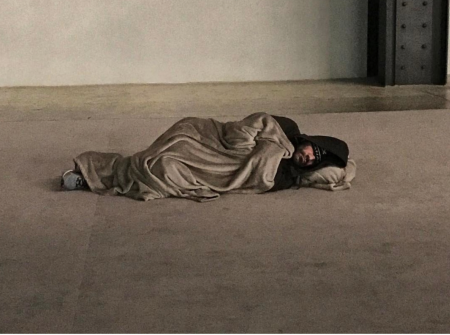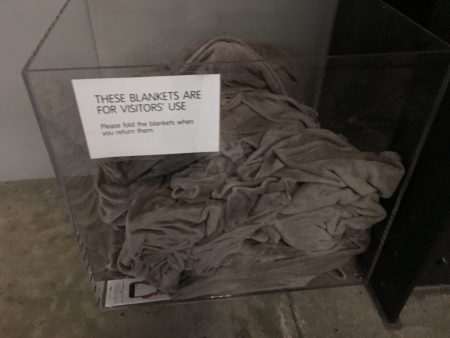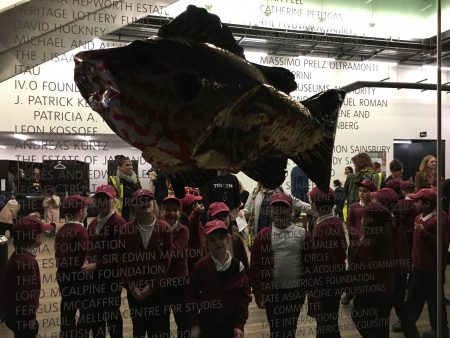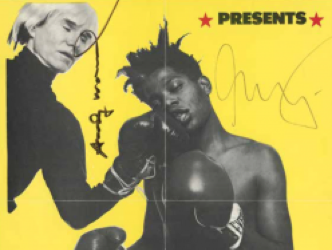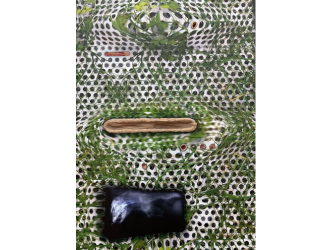Philippe Parreno (born 1963) the French artist who lives in Paris (for an artist to remain in Paris after becoming known is a rarity) has filled the entire Turbine Hall at the Tate Modern. The length of the exhibition, seven months in total (From 4th October 2016 until 2nd April), is substantial, as is the size of the London space (3,300 m2 (35,520 sq ft), which is free to visitors.
Philippe Parreno is used to working on a large scale.
In 2013 he took over the entire Palais de Tokyo.
In 2015 it was the Park Avenue Amory.
And in 2015-2016 he occupied HangarBicocca, the former factory in Milan.
He is certainly the only artist to have done the grand slam of supersized contemporary art spaces around the world. The only one missing is Monumenta at the Grand Palais in Paris.
One might be inclined to retort that he delivered a monument with ‘Zidane, a Portrait of the 21st Century’ in collaboration with British artist Douglas Gordon in 2004.
This film, which centres around the titular football player over the course of one game, can be thought of as a sculpture of an athlete reenvisioned though the visual technologies of today.
And if we go back further still, to 1991, and a work in which he filmed children holding placards written with the words ‘No more reality’, we get to what seems to concern him most today: the child – or in any case his own child with whom he clearly spends a lot of time, even in his studio – and the fleetingness of reality.
His work at the Tate deals pointedly with the latter.
‘The appeal of the Turbine Hall is not its size but the fact that it is a kind of free public space’ explains the artist. ‘We are not dealing with in the classic museum space but a somewhere you pass through, like a covered park where people go to have their lunch, to hang out, to watch.
My idea was to treat it as an urban park.
Actually, I recently bought a hundred blankets to allow people to while away their time there in winter.
In a park, the spectacle is constantly different. That’s what I wanted in the Tate too.’
The collection of installations that includes a marquee, a giant projection, speakers that rise and fall, as well as lights and moving walls is controlled by a very special piece of equipment: a bacteriological computer.
What this is a population of yeast that is sensitive to meteorological and environmental data. Sounds,Light, temperature, humidity... programme the dance of the entire thing.
‘I wanted to vary a number of elements, but for these to depend not on random data but living data. When you visit the exhibition in October or December, you get a completely different impression. It’s become like a living being.’
The idea of the bacteriological computer was inspired by and bought from the CNRS, the famous public French research institute.
Philippe Parreno explains why he delegated the functioning of the exhibition to bacteria. ‘I like to think that this very large space is directed by something very small.’
It must be said that when visiting ‘Anywhen’, as the exhibition is titled, you do not get the sense that there is a rectilinear narration.
‘I’m distancing myself more and more from the idea of programming. Even in ‘Zidane’ there is no narrative authority. I am really fascinated by the phenomenon known as ‘floating attention’, when the mind drifts off and then comes back.
These moments are very sexy. They’re like a choreography of the mind. In the exhibition, the viewers do not know whether they’ve got there at the right time or not. It has always already started.’
These days Philippe Parreno is no longer producing only films, like those projected at the Tate, nor only drawings and prints, like those given to the exhibition sponsors, nor only marquees (which he describes as decorative objects and which are sort of canopies such as you’d find in theatre spaces) but complete exhibition processes composed a of choreography of all the ingredients previously listed and others besides.
Philippe Parreno is not an easy artist.
He lights out an original path which questions the forms taken by art, the time dedicated to art, the way in which we perceive it, and even the concept of being the author.
Until 2 April www.tate.org.uk
From 3 February, Philippe Parreno takes over the entire Serralves Museum in Porto. Next October he will be at the Museo Jumex in Mexico and in the meantime he will take part in the Venice Biennale, curated by Christine Macel.
‘ A time coloured space’ from 3 February until 7 May. www.serralves.pt
Support independent news on art.
Your contribution : Make a monthly commitment to support JB Reports or a one off contribution as and when you feel like it. Choose the option that suits you best.
Need to cancel a recurring donation? Please go here.
The donation is considered to be a subscription for a fee set by the donor and for a duration also set by the donor.


